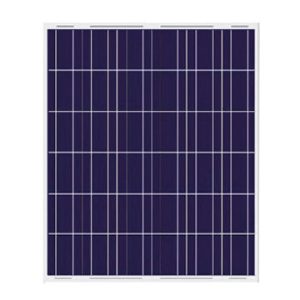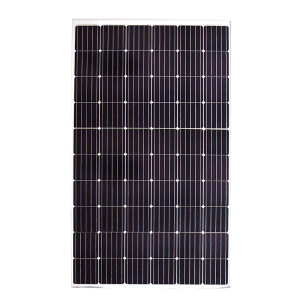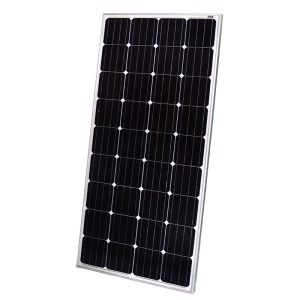As India forges ahead on its path towards sustainable energy solutions, the demand for solar power has witnessed an unprecedented surge. Among the various solar panel options available in the market, the 300-watt solar panel has emerged as a popular choice for both residential and commercial installations. This comprehensive guide delves into the intricacies of 300-watt solar panel pricing in India, providing valuable insights for homeowners, businesses, and industry professionals alike.
The adoption of solar energy in India has been driven by a multitude of factors, including rising electricity costs, environmental concerns, and government initiatives aimed at promoting renewable energy sources. With the country’s vast geographical expanse and abundant sunlight, solar power presents a viable and cost-effective solution to meet the nation’s ever-growing energy needs.
In this article, we will explore the key factors influencing the pricing of 300-watt solar panels, analyze the offerings of leading domestic and international manufacturers, and shed light on government subsidies and incentives. Additionally, we will delve into the installation costs, long-term considerations, and the overall return on investment associated with these solar panels.
Key Factors Influencing 300-Watt Solar Panel Prices
The pricing of 300-watt solar panels in India is influenced by a multitude of factors, each playing a crucial role in determining the final cost to the consumer. Understanding these factors is essential for making informed decisions and maximizing the benefits of solar energy adoption.
Manufacturing Costs
One of the primary determinants of solar panel pricing is the manufacturing cost, which encompasses various elements:
- Raw Material Expenses: The cost of raw materials, such as silicon, glass, and aluminum, can significantly impact the overall manufacturing cost. Fluctuations in the global market prices of these materials directly influence the pricing of solar panels.
- Production Processes and Automation Levels: The level of automation and efficiency in the manufacturing process can greatly affect the cost of production. Highly automated facilities with streamlined processes tend to produce solar panels at a lower cost compared to those with less advanced manufacturing techniques.
- Economies of Scale: Large-scale manufacturers often benefit from economies of scale, allowing them to produce solar panels at a lower cost per unit. This advantage enables them to offer competitive pricing in the market.
Technology and Efficiency
The type of technology employed in solar panels and their associated efficiency levels play a significant role in determining their pricing:
- Monocrystalline vs. Polycrystalline Panels: Monocrystalline solar panels, known for their higher efficiency and superior performance, typically command a premium price compared to their polycrystalline counterparts.
- Advanced Cell Technologies: Manufacturers continuously strive to develop and incorporate advanced cell technologies, such as Passivated Emitter and Rear Cell (PERC), Half-Cut cells, and others, to enhance the efficiency of their solar panels. These technological advancements often result in higher pricing but offer improved energy generation capabilities.
- Higher Efficiency Panels: Solar panels with higher efficiency ratings generally come at a higher cost but can generate more electricity per square meter of surface area, potentially offsetting the initial investment over time.
Brand Reputation and Quality
The brand reputation and perceived quality of solar panels also influence their pricing in the Indian market:
- Established Brands: Well-established brands with a proven track record and strong market presence often command higher prices due to their reputation for quality and reliability.
- Quality Assurance and Warranty Offerings: Solar panel manufacturers that provide comprehensive quality assurance and extended warranty coverage tend to price their products higher, reflecting the added value and peace of mind for consumers.
- Premium Pricing for Top-Tier Brands: Certain premium brands in the solar industry are known for their cutting-edge technology, superior performance, and exceptional customer service. These brands typically command the highest prices in the market, catering to consumers willing to invest in top-of-the-line products.
Comparative Analysis of Leading Solar Panel Brands
The Indian solar market is home to a diverse range of domestic and international manufacturers, each offering their unique range of 300-watt solar panels. To help consumers make an informed decision, we have compiled a comparative analysis of some of the leading brands and their respective pricing for 300-watt solar panels.
Domestic Manufacturers
- Loom Solar: Known for their commitment to quality and affordability, Loom Solar offers 300-watt solar panels at a competitive price range of ₹16,000 to ₹18,000.
- Tata Power Solar: As a subsidiary of the renowned Tata Group, Tata Power Solar is a trusted name in the Indian solar industry. Their 300-watt solar panels are priced between ₹18,000 and ₹22,000, reflecting their brand reputation and quality assurance.
- Vikram Solar: Vikram Solar is a prominent player in the domestic solar market, offering 300-watt solar panels at a price range of ₹16,000 to ₹20,000, making them an attractive option for cost-conscious consumers.
- Waaree Solar: With a strong focus on innovation and sustainability, Waaree Solar’s 300-watt solar panels are priced between ₹17,000 and ₹21,000, catering to both residential and commercial customers.
- Adani Solar: As part of the Adani Group’s renewable energy initiatives, Adani Solar offers 300-watt solar panels at a price range of ₹18,000 to ₹22,000, backed by the company’s reputation and financial strength.
International Players
- REC Solar: A renowned Norwegian brand, REC Solar is known for its high-efficiency solar panels. Their 300-watt offerings are priced between ₹22,000 and ₹26,000, reflecting their premium positioning in the market.
- Premier Energies: Hailing from Germany, Premier Energies is a trusted name in the solar industry. Their 300-watt solar panels are priced between ₹20,000 and ₹24,000, offering a balance between quality and affordability.
- Spark Solar: An American brand with a strong presence in India, Spark Solar’s 300-watt solar panels are priced between ₹19,000 and ₹23,000, making them a competitive option for consumers.
- Goldi Solar: A Chinese manufacturer with a global footprint, Goldi Solar offers 300-watt solar panels at a price range of ₹18,000 to ₹22,000, catering to both residential and commercial segments.
- Navitas Solar: Navitas Solar, a Canadian company, has established a strong presence in the Indian market. Their 300-watt solar panels are priced between ₹21,000 and ₹25,000, positioning them as a premium offering.
It is important to note that these prices are subject to change based on various factors, such as market conditions, promotional offers, and bulk purchases. Additionally, the final cost may vary depending on the location, installation requirements, and any applicable government subsidies or incentives.
Government Initiatives and Subsidies
Recognizing the importance of promoting renewable energy sources, the Indian government has implemented various initiatives and subsidy programs to encourage the adoption of solar power. These measures have played a crucial role in making solar energy more accessible and affordable for consumers across the country.
Central and State-Level Subsidy Programs
The Ministry of New and Renewable Energy (MNRE) has introduced several subsidy schemes to incentivize the installation of solar power systems. These subsidies are designed to reduce the upfront costs associated with solar panel purchases and installations, making them more affordable for households and businesses.
One of the key subsidy programs is the Grid-Connected Rooftop Solar Photovoltaic (PV) Program, which provides financial assistance to residential and commercial consumers who install grid-connected solar PV systems. The subsidy amount varies based on the system capacity and the category of the beneficiary, with higher subsidies offered to residential consumers and certain priority sectors.
In addition to the central government’s initiatives, several state governments have also implemented their own subsidy programs to promote solar energy adoption within their respective jurisdictions. These state-level subsidies can further reduce the overall cost of solar panel installations, making them even more attractive for consumers.
Net Metering Policies and Incentives
Net metering is a billing mechanism that allows solar power system owners to receive credit for the excess electricity they generate and feed back into the grid. This incentive encourages consumers to adopt solar energy by providing them with the opportunity to offset their electricity bills and potentially earn revenue from their surplus energy production.
The Indian government has mandated net metering policies across the country, enabling consumers to take advantage of this incentive. However, the specific regulations and tariffs may vary from state to state, so it is essential to consult with local authorities and solar installers to understand the net metering policies applicable in your area.
Impact on Overall System Costs and Payback Periods
The combination of government subsidies and net metering incentives can significantly reduce the overall cost of installing a solar power system, including the cost of 300-watt solar panels. This, in turn, shortens the payback period, which is the time it takes for the energy savings and potential revenue from net metering to offset the initial investment.
By leveraging these initiatives, consumers can enjoy a more affordable entry into the world of solar energy, while also contributing to the nation’s efforts towards sustainable energy production and environmental conservation.
Installation and Additional Costs
While the cost of 300-watt solar panels is a significant component of the overall investment, it is essential to consider the additional expenses associated with the installation and integration of a complete solar power system. These costs can vary depending on factors such as the size of the installation, the complexity of the project, and the location.
Site Evaluation and System Design
Before the installation process can begin, a thorough site evaluation and system design must be conducted. This involves assessing the suitability of the location for solar panel installation, considering factors such as roof orientation, shading patterns, and structural integrity. Additionally, the system design determines the number of solar panels required, the appropriate inverter size, and other components necessary for optimal performance.
The cost of site evaluation and system design can range from ₹5,000 to ₹15,000, depending on the complexity of the project and the expertise of the solar installer.
Inverters and Balance of System Components
In addition to the solar panels themselves, a complete solar power system requires several other components, collectively known as the balance of system (BOS). These components include:
- Inverters: Inverters are responsible for converting the direct current (DC) electricity generated by the solar panels into alternating current (AC) electricity, which is compatible with household appliances and the grid.
- Mounting Systems: Solar panels need to be securely mounted on rooftops or ground-mounted structures, requiring specialized mounting systems that can withstand environmental conditions and ensure optimal panel positioning.
- Wiring and Electrical Components: Cables, conduits, junction boxes, and other electrical components are necessary to safely and efficiently transmit the generated electricity from the solar panels to the inverters and the electrical grid.
- Monitoring and Control Systems: Advanced monitoring and control systems can be integrated into the solar power system to track performance, detect issues, and optimize energy production.
The cost of these BOS components can vary significantly based on the quality, brand, and complexity of the system, typically ranging from ₹50,000 to ₹1,50,000 for a residential installation.
Labor and Installation Charges
The installation of a solar power system is a complex process that requires skilled labor and expertise. Solar installers charge for their services, which can include site preparation, panel mounting, electrical wiring, and system commissioning.
Labor and installation charges can account for a significant portion of the overall cost, ranging from ₹20,000 to ₹50,000 or more, depending on the size and complexity of the installation, as well as the location and labor rates in the area.
Permitting and Interconnection Fees
Depending on the local regulations and utility requirements, homeowners or businesses may need to obtain permits and pay interconnection fees to connect their solar power system to the grid. These fees can vary widely across different states and municipalities, ranging from a few thousand rupees to tens of thousands of rupees.
It is crucial to factor in these additional costs when budgeting for a solar power system installation, as they can significantly impact the overall investment required.
Long-term Considerations
While the upfront costs of installing a 300-watt solar panel system are substantial, it is essential to consider the long-term implications and benefits of this investment. Several factors play a role in determining the overall return on investment and the lifetime value of a solar power system.
Performance Degradation over Time
Like any other electronic device, solar panels experience a gradual decline in performance over time due to various factors, such as exposure to environmental conditions, material degradation, and normal wear and tear. Most manufacturers provide a performance warranty that guarantees a certain level of power output over an extended period, typically 25 years.
For example, a common performance warranty might guarantee that the solar panels will maintain at least 80% of their initial rated power output after 25 years of operation. This degradation rate is factored into the overall energy production calculations and financial projections when evaluating the long-term viability of a solar power system.
It is essential to consider this gradual decline in performance when estimating the system’s energy generation and potential cost savings over its lifetime. Regular maintenance and monitoring can help mitigate the impact of degradation and ensure optimal performance.
Maintenance and Cleaning Requirements
While solar panels are designed to be low-maintenance, they do require periodic cleaning and inspection to ensure optimal performance. Dust, dirt, and debris can accumulate on the panel surface, reducing their ability to absorb sunlight and generate electricity effectively.
Regular cleaning, typically every six months or as recommended by the manufacturer, can help maintain the panels’ efficiency and prolong their lifespan. The cost of cleaning and maintenance services can vary depending on the size of the installation, accessibility, and local labor rates.
Additionally, it is essential to conduct periodic inspections to identify any potential issues, such as loose connections, damaged components, or structural problems. Addressing these issues promptly can prevent further damage and ensure the system’s continued operation.
Warranty Coverage and Replacement Costs
Most reputable solar panel manufacturers offer comprehensive warranties to protect consumers’ investments. These warranties typically cover two main aspects:
- Product Warranty: This warranty covers manufacturing defects and material failures, ensuring that the solar panels will function as intended for a specified period, usually ranging from 10 to 25 years.
- Performance Warranty: As mentioned earlier, this warranty guarantees a certain level of power output over an extended period, typically 25 years or more.
It is crucial to understand the terms and conditions of these warranties, as they can vary among manufacturers. In the event of a panel failure or performance issue covered by the warranty, the manufacturer may repair, replace, or provide a prorated refund for the affected panels.
However, it is essential to consider the potential replacement costs for solar panels beyond the warranty period. As technology advances and newer, more efficient panels become available, the cost of replacing older panels may be significant. Factoring in these potential future expenses can help consumers make informed decisions and plan for long-term solar power system ownership.
Return on Investment and Payback Periods
One of the primary considerations for investing in a solar power system is the potential return on investment (ROI) and the associated payback period. The payback period refers to the time it takes for the energy savings and potential revenue from net metering to offset the initial investment in the solar power system.
The payback period for a 300-watt solar panel installation in India can vary significantly depending on several factors, including:
- Initial Investment: The upfront cost of the solar panels, inverters, installation, and other associated expenses.
- Energy Consumption and Savings: The amount of electricity generated by the solar panels and the corresponding savings on utility bills.
- Net Metering Policies and Rates: The availability and terms of net metering programs, which can provide additional revenue from excess energy fed back into the grid.
- Incentives and Subsidies: The impact of government subsidies and other incentives on reducing the initial investment.
- Financing Options: The availability and terms of financing options, such as loans or leasing programs, which can affect the overall cost and payback period.
Typically, the payback period for a residential solar power system in India can range from 5 to 10 years, depending on the specific circumstances. However, it is essential to consult with solar installers and conduct a detailed financial analysis to determine the expected payback period and ROI for your particular situation.
Once the payback period is reached, the solar power system effectively generates free electricity for the remainder of its lifespan, providing significant long-term cost savings and contributing to a more sustainable energy future.
Conclusion
As India continues its journey towards a greener and more sustainable energy landscape, the adoption of solar power has become increasingly attractive and accessible. The 300-watt solar panel, in particular, has emerged as a popular choice for both residential and commercial installations, offering a balance between efficiency, affordability, and scalability.
This comprehensive guide has explored the intricate factors influencing the pricing of 300-watt solar panels in India, including manufacturing costs, technology advancements, brand reputation, and government initiatives. By understanding these factors, consumers can make informed decisions and navigate the market with confidence.
The comparative analysis of leading domestic and international solar panel brands has provided valuable insights into the pricing strategies and offerings of various manufacturers, enabling consumers to evaluate their options based on their specific needs and budgets.
Furthermore, this article has delved into the additional costs associated with solar power system installations, such as site evaluation, balance of system components, labor charges, and permitting fees. Recognizing these expenses is crucial for accurate budgeting and financial planning.



